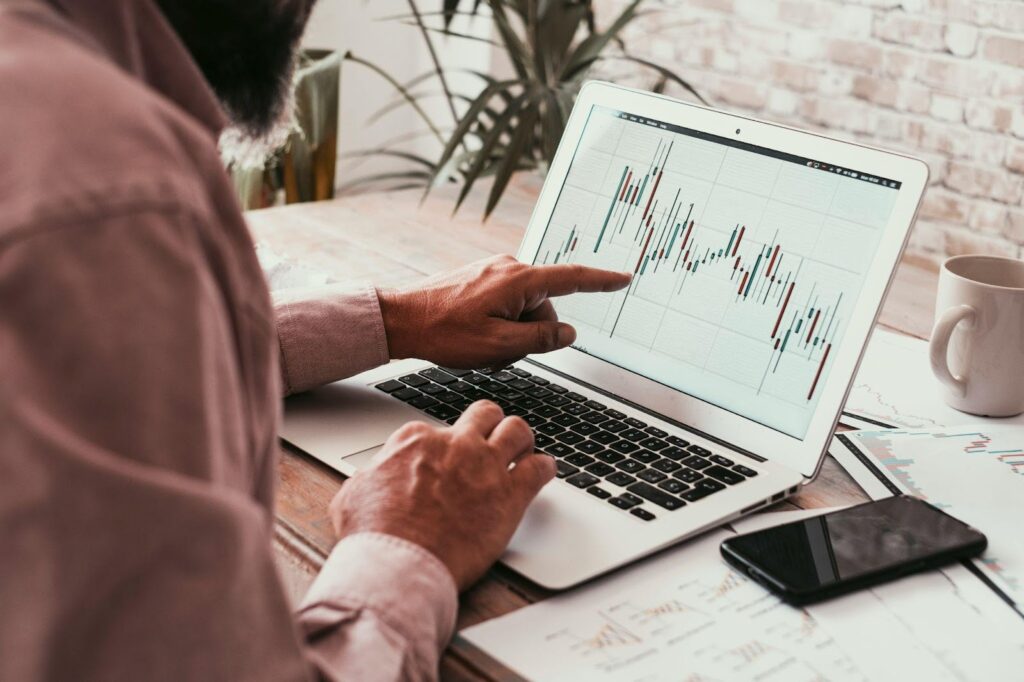Buying and selling currencies on the worldwide market is known as forex trading or foreign exchange trading. It’s a vast and dynamic arena where trillions of dollars are traded daily. Before you get headfirst into forex trading, be sure you have a firm grasp of the fundamentals.
Post Contents
What is Forex Trading?
At its core, forex trading involves exchanging one currency for another. The goal is to profit from changes in the exchange rates between currencies. If you think the Euro will go up in value compared to the USD, you might buy Euros with USD and sell them at a later date when the exchange rate is greater.

How the Forex Market Works
The forex market operates 24 hours a day, five days a week, across major financial centers around the world — London, New York, Tokyo, and Sydney. This continuous operation is possible because forex trading is decentralized; it happens over the counter rather than on a centralized exchange.
Key Concepts in Forex Trading
Understanding a few key concepts is vital as you embark on your forex trading journey:
| Currency Pairs | When you trade forex, currencies are always mentioned in pairs. The base currency is the first pair, and the quote currency is the second pair. EUR/USD, GBP/JPY, and AUD/CAD are all examples of popular pairs. |
| Pips | A pip is the smallest price movement in the forex market. For most currency pairs, a pip is equal to 0.0001. It’s a critical measure for understanding your potential profits and losses. |
| Leverage | Leverage allows you to control a large position with a relatively small amount of capital. While leverage can amplify your gains, it can also increase your losses, making it a double-edged sword. |
| Spread | The spread is the difference between the bid price (the price at which you can sell) and the ask price (the price at which you can buy). Brokers make their money through the spread, so it’s essential to consider this when making trades. |
Steps to Start Forex Trading
Step 1: Master the Basics
Educate yourself by learning the basics of forex trading through online courses, books, and webinars. Knowledge is your most powerful tool. Take advantage of free resources to deepen your understanding. Joining trading communities can also provide valuable insights and support from experienced traders.
Step 2: Find Your Forex Broker
Choose a reliable forex broker, like MTrading, with good reviews, reliable customer service, and a robust trading platform. Make sure the broker is regulated by a reputable authority to ensure the safety of your funds. Compare the features, fees, and trading conditions of different brokers to find the best fit for your needs.
Step 3: Open a Demo and Live Trading Account
Once you’ve chosen a broker, open a trading account. To help you get a feel for trading without actually risking any of your own money, the majority of brokers provide demo accounts. You can get a feel for the trading platform and hone your methods in this way. If you’re ready to trade with real money, you can switch to a live account.
Step 4: Develop a Winning Strategy
Develop a trading strategy that includes your risk tolerance, trading goals, and methods for analyzing the market. Your strategy should outline when to enter and exit trades and how to manage your risk.
Step 5: Start Small and Scale Up Confidently
Begin with small trades to gain experience and gradually increase your positions as you become more comfortable with the market dynamics. Monitor your trades closely and learn from both your successes and mistakes. Over time, you can scale up your trading activities as you build confidence and proficiency.
Types of Forex Analysis
To make informed trading decisions, you need to analyze the market. Here are the three main types of forex analysis:
1. Technical Analysis
Technical analysis looks at past market data, mostly price and volume, to guess how prices will move in the future. These are some of the most common tools and indicators used in technical analysis:
- Moving Averages
- Relative Strength Index (RSI)
- Bollinger Bands
- Fibonacci Retracement
2. Fundamental Analysis
Fundamental analysis examines economic, financial, and geopolitical factors that can affect currency prices. Key economic indicators to watch include:
- Interest Rates
- Gross Domestic Product (GDP)
- Unemployment Rates
- Inflation Rates
3. Sentiment Analysis
Sentiment analysis gauges the market’s mood and can often predict potential market movements. It involves understanding the overall attitude of traders and investors towards a particular currency or the market as a whole.

Risk Management in Forex Trading
Effective risk management is crucial to your success in forex trading. Here are some strategies to manage your risk:
- Use Stop-Loss Orders: A stop-loss order automatically closes your position when it reaches a certain price, helping you limit your losses.
- Diversify Your Portfolio: Avoid putting all your money into one trade. Spread your investments across different currency pairs to reduce risk.
- Keep Your Leverage Low: High leverage can lead to significant losses. Start with low leverage and increase it only as you gain more experience.
- Set Realistic Goals: Have clear, achievable goals for your trading. Don’t expect to become a millionaire overnight; focus on consistent, steady gains.
Words of Encouragement
Forex trading offers exciting opportunities to profit from the global financial markets. Remember, every trader starts somewhere. It’s the continuous learning, the discipline to stick to your plan, and the patience to wait for the right opportunities that set successful traders apart.